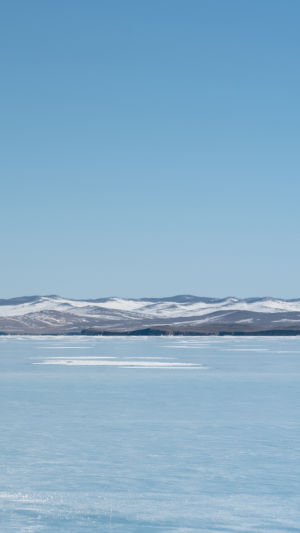In winter, the temperature drops continuously, and due to heat transfer, the temperature of the river surface remains the same as the outside temperature, and convection is formed by the flow of water.
So that the temperature inside the starting water also remains the same.
When the single temperature drops below 4 degrees, the temperature of the river surface also drops.
But due to the inverse expansion of the water, the density also becomes smaller, no longer sink.
So that the internal water, and can not form convection, the water inside the random river can still maintain 4 degrees, the river surface continues to cool down until 0 degrees, began to freeze, and continue to cool down.
The temperature of the upper surface of the ice and the outside world, but because the ice is a poor conductor of heat, so the lower surface of the ice still remains at 0 degrees.
The water under the ice surface does not freeze, but still flows, and the temperature gets lower as you go up.
Many people see the surface of the lake is frozen, there will be the impulse to walk on the ice, whether you can walk on the ice depends on the thickness of the ice.
According to the ice bearing capacity analysis, when the ice thickness ≥ 15 cm, adults can safely go up skating, the thickness is equivalent to the length of the adult hand.
When the ice thickness ≥ 20 cm, snowmobiles weighing about 0.25 tons can gallop on the ice.
When the ice thickness increases to ≥40 cm, which is about the length of the palm of the hand plus a small arm, the ice is ready for traffic, and can carry a small car weighing about 2 tons.
It should be noted that the ice thickness of natural waters are uneven, underwater conditions are also more complex, so the naked eye alone can not see the thickness of the ice.
The ice rink has a professional method of measuring the thickness of the ice.
In one corner of the ice rink, use a steel brazier to smash a small hole in the ice, stick the iron hook in, hook the bottom of the ice, and pinch the iron hook with your fingers.
After removing the iron hook, then use a tape measure to measure the distance of the iron hook directly below the ice surface.
Then the general lake ice from the center or the edge of the part to start?
The answer is from the edge.
1. There is less water at the edge of the lake.
When it first starts to freeze, the water on the shore is shallow and the temperature drops quickly, while the middle of the lake is deep and the water temperature drops slowly.
When the surface area in contact with the air is the same, the water at the edge of the lake is less, so it is more likely to freeze.
The heat of the water can only be taken away by the earth and air, the surface of the water in contact with the air, it is easier to freeze.
2. The lake has more water magazines.
The specific heat capacity of water is large, and near the shore of the water impurities more reduce the specific heat capacity of water, exothermic faster resulting in water freezing fast.
And for the flow of water, the speed of water flowing around the lake is generally slower.
In the lake, each part of the flow rate is different, the speed closest to the lake is lower.
There is some water will seep into the soil on the shore, it will not continue to flow, and so in low temperature conditions icing.





